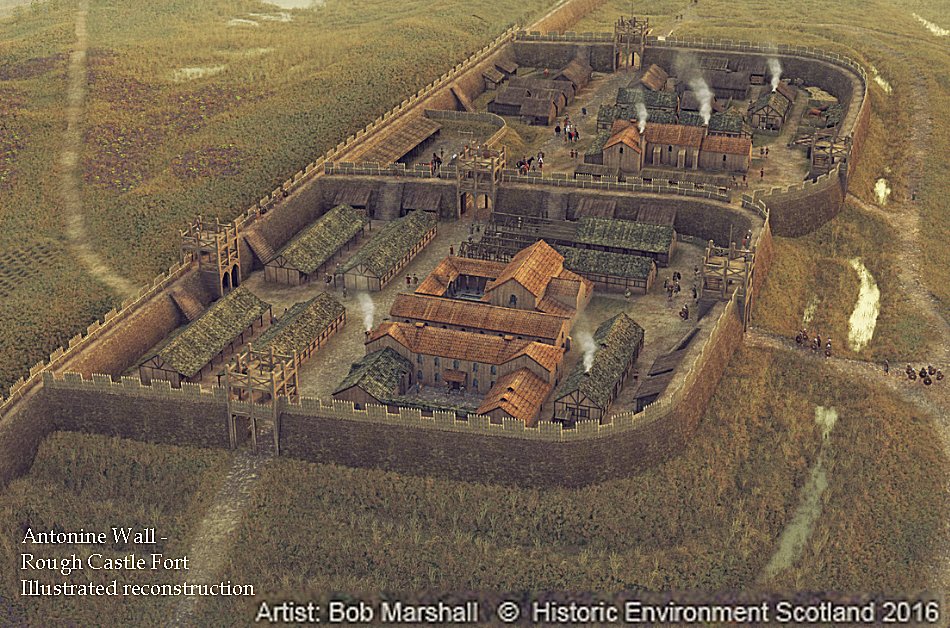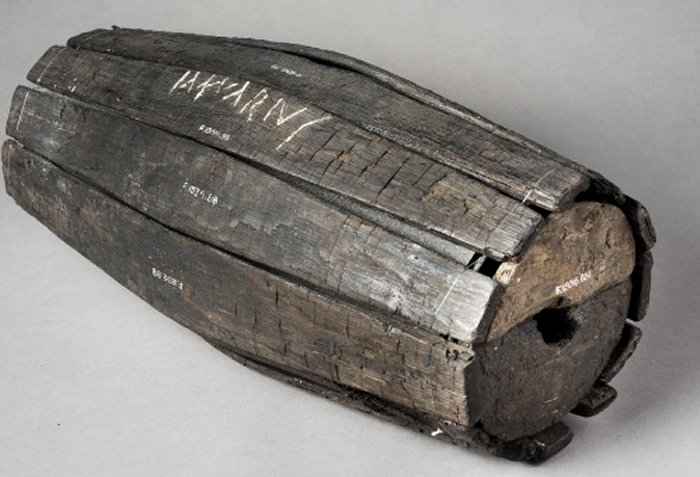Antonine Wall: Impressive Roman Frontier Built By Empire’s Three Legions In Scotland
A. Sutherland - AncientPages.com - The Hadrian Wall lost its importance when Roman Emperor Hadrian's successor, Antonius Pius (138 - 161), launched a successful military campaign in southern Scotland early in his reign and began constructing the Antonine Wall.
Image credit: Artist Bob Marshall - Historic Environment Scotland 2016
The Romans started to build the Antonine Wall in Britain only fifteen years after the
construction of Hadrian's Wall was completed. It is known that the famous Hadrian's Wall was built for both military and economic needs.
The Wall would also prevent raiders from the north from destroying the strategic Roman base at Corbridge in Northumberland.
The Antonine Wall was constructed by another second-century emperor even further north of Hadrian's Wall. The unrest from the north must have been palpable to dictate the construction of such massive formations.
From 155 to 157 CE, the Brigantes revolted in Scotland. They were ancient Britons who, in pre-Roman times, controlled the most extensive section of what would become Northern England -
The Antonine Wall's ruins are less visible than those of the Hadrian's Wall. It is mainly due to the hazardous building material - turf- used to construct the Wall. However, it is evidenced by the construction of foundations that the Romans planned to erect a stone wall.
The soldiers of the Second Augusta, the Sixth Victrix, and the Twentieth Valeria Victrix legions (also responsible for the building of Hadrians Wall) began to construct the Antonine Wall in AD 142 at the order of Roman Emperor Antoninus Pius.
The structure that runs across what is now the Central Belt of Scotland, between the Firth of Forth and the Firth of Clyde, was the Roman Empire's northernmost frontier barrier.
A wooden barrel, with the owner's name, scratched into it. Image credit: Hunterian Museum
The work took about 12 years to complete. These legions erected stone slabs on completion of their work and are the records of the length of the Wall they completed, the emperor's name, and the legion's name.
The slabs are unique because no similar slabs are known from any frontier of the Roman Empire.
Originally six forts were planned (Carriden, Mumrills, Castlecary, Bar Hill, Balmuildy, and Old Kilpatrick), with several fortlets built in between. Later, these fortlets were abandoned, and the next ones were constructed.
The Antonine Wall (named after the Roman emperor Antoninus Pius) was an impressive barrier with a height of 4 meters, 4.3 meters wide, with a large ditch on the north side for reinforcement of defense and a network of roads on the south side for the efficient movement of troops. It was 63 km (39 miles) long, with 19 forts every 3.3 km.
 Left: Found at Carleith, Dunochter, before 1699. Translates as " For the Emperor Antonius Augustus Pius, Father of this country, the Second Augustan Legion completed 3271 feet (of the wall)" Greyish buff sandstone; Right: Unknown provenance - donated to Glasgow University in 1695; Translated as "For the Emperor Caesar Titus Aelius Hadrianus Antoninus Augustus Pius, Father of this Country, a detachment of the Twentieth Valerian and Victorius Legion; Image credit: University of Glasgow, Scotland
Left: Found at Carleith, Dunochter, before 1699. Translates as " For the Emperor Antonius Augustus Pius, Father of this country, the Second Augustan Legion completed 3271 feet (of the wall)" Greyish buff sandstone; Right: Unknown provenance - donated to Glasgow University in 1695; Translated as "For the Emperor Caesar Titus Aelius Hadrianus Antoninus Augustus Pius, Father of this Country, a detachment of the Twentieth Valerian and Victorius Legion; Image credit: University of Glasgow, Scotland
As early as 162 AD (only eight years after its completion), the Romans from this line were forced to retreat to the south again and return to the older fortification - Hadrian's Wall - after it was strengthened.
Unfortunately for the Romans, the Wall was abandoned, recaptured a year later, and finally, entirely abandoned by 164 CE.
Left: Altar to ‘the Spirit of the Land of Britain’. © Hunterian Museum; Right: Tombstone of Verecunda © Hunterian Museum
Archaeological excavation conducted in the ruins of the Wall revealed many Roman artifacts, both military and domestic. When the Romans abandoned a fort, they usually buried many possessions they did not wish to salvage and take with them. They did not want them to be used by local people.
Except for decorative slabs, the Romans also left altars, tombstones, personal possessions, and building materials, which were well-preserved, well-buried, and, therefore, never touched by robbers.
Written by – A. Sutherland AncientPages.com Staff Writer
Updated on April 18, 2023
Copyright © AncientPages.com All rights reserved. This material may not be published, broadcast, rewritten or redistributed in whole or part without the express written permission of AncientPages.com
Expand for referencesReferences:
Harper W. The Antonine Wall (Defenders of Rome, Book 4)
More From Ancient Pages
-
 Why Was Napoleon Bonaparte Defeated At Waterloo?
Ancient History Facts | Jul 3, 2017
Why Was Napoleon Bonaparte Defeated At Waterloo?
Ancient History Facts | Jul 3, 2017 -
 Mongol Empire: Rise And Fall Of One The World’s Largest And Fearsome Empires
Featured Stories | Mar 26, 2021
Mongol Empire: Rise And Fall Of One The World’s Largest And Fearsome Empires
Featured Stories | Mar 26, 2021 -
 Two Inca Measurement Systems Calculated By Polish Architect
Archaeology | Nov 4, 2020
Two Inca Measurement Systems Calculated By Polish Architect
Archaeology | Nov 4, 2020 -
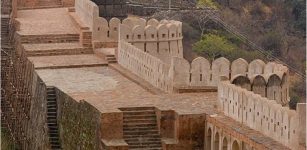 Magnificent And Massive Great Wall Of India – Astonishing Ancient Structure Shrouded In Secrecy
Civilizations | Jul 7, 2015
Magnificent And Massive Great Wall Of India – Astonishing Ancient Structure Shrouded In Secrecy
Civilizations | Jul 7, 2015 -
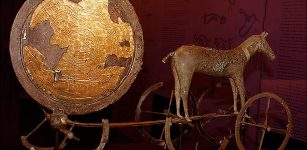 Sun Chariot – Powerful Symbol Of Bronze Age Cosmology
Ancient Symbols | Feb 28, 2018
Sun Chariot – Powerful Symbol Of Bronze Age Cosmology
Ancient Symbols | Feb 28, 2018 -
 2,500-Year-Old Tibetan Medical Text Describes A Coronavirus-Like Outbreak In Surprisingly Accurate Details
News | Oct 26, 2020
2,500-Year-Old Tibetan Medical Text Describes A Coronavirus-Like Outbreak In Surprisingly Accurate Details
News | Oct 26, 2020 -
 Cro-Magnon Man Invented First Indoor Lighting – An Unusual But Effective Oil Lamp
Ancient History Facts | Jan 22, 2019
Cro-Magnon Man Invented First Indoor Lighting – An Unusual But Effective Oil Lamp
Ancient History Facts | Jan 22, 2019 -
 How Did An Ancient Egyptian Sarcophagus End Up Abandoned On A Street In London?
Artifacts | Mar 22, 2023
How Did An Ancient Egyptian Sarcophagus End Up Abandoned On A Street In London?
Artifacts | Mar 22, 2023 -
 On This Day In History: King Charles II Is Restored To The Throne Of England, Scotland And Ireland – On May 29, 1660
News | May 29, 2016
On This Day In History: King Charles II Is Restored To The Throne Of England, Scotland And Ireland – On May 29, 1660
News | May 29, 2016 -
 Secret Kumari Kandam Continent And Links To Lemurians
Civilizations | May 18, 2020
Secret Kumari Kandam Continent And Links To Lemurians
Civilizations | May 18, 2020 -
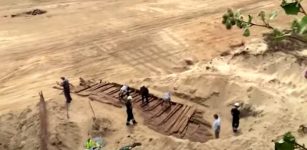 Remains Of A Roman Ship Discovered In Serbia
Archaeology | Aug 7, 2023
Remains Of A Roman Ship Discovered In Serbia
Archaeology | Aug 7, 2023 -
 Ancient Complex Of Elephanta Caves In India
Featured Stories | Dec 27, 2016
Ancient Complex Of Elephanta Caves In India
Featured Stories | Dec 27, 2016 -
 Chocolate Was A ‘Hot Property’ In 17th Century England And There Were Rules For Safe Consumption
Featured Stories | Jun 27, 2018
Chocolate Was A ‘Hot Property’ In 17th Century England And There Were Rules For Safe Consumption
Featured Stories | Jun 27, 2018 -
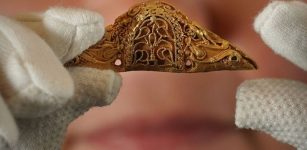 Exceptionally Rare 1,300-Year-Old Golden Pommel Found In Blairdrummond, Scotland
Archaeology | Nov 1, 2022
Exceptionally Rare 1,300-Year-Old Golden Pommel Found In Blairdrummond, Scotland
Archaeology | Nov 1, 2022 -
 Alexander Nevsky: Grand Prince Of Novgorod, Skilled Fighter, Quick–Thinking Strategist Who Defeated Swedish And German Invaders
Featured Stories | Feb 22, 2019
Alexander Nevsky: Grand Prince Of Novgorod, Skilled Fighter, Quick–Thinking Strategist Who Defeated Swedish And German Invaders
Featured Stories | Feb 22, 2019 -
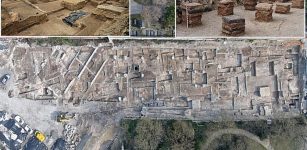 A Huge Site Dated To Roman-Era Unearthed In Reims (Marne), France
Archaeology | Mar 20, 2023
A Huge Site Dated To Roman-Era Unearthed In Reims (Marne), France
Archaeology | Mar 20, 2023 -
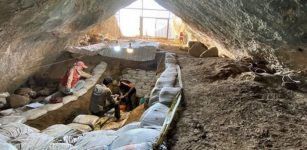 Humans Lived In The Qal-e Kord Caves 400,000 Years Ago – Oldest Settlement In Iran Found?
Archaeology | Aug 24, 2022
Humans Lived In The Qal-e Kord Caves 400,000 Years Ago – Oldest Settlement In Iran Found?
Archaeology | Aug 24, 2022 -
 Final Journey Of Ötzi Iceman: More Clues Found In Frozen Moss
Archaeology | Nov 1, 2019
Final Journey Of Ötzi Iceman: More Clues Found In Frozen Moss
Archaeology | Nov 1, 2019 -
 Locations Of 11 Lost Ancient Cities Revealed On 4,000-Year-Old Artifacts
Archaeology | Nov 15, 2017
Locations Of 11 Lost Ancient Cities Revealed On 4,000-Year-Old Artifacts
Archaeology | Nov 15, 2017 -
 World’s Oldest Hand Stencils Were Made By Neanderthals In The Maltravieso Cave 66,000 Years Ago
Archaeology | Dec 9, 2024
World’s Oldest Hand Stencils Were Made By Neanderthals In The Maltravieso Cave 66,000 Years Ago
Archaeology | Dec 9, 2024

